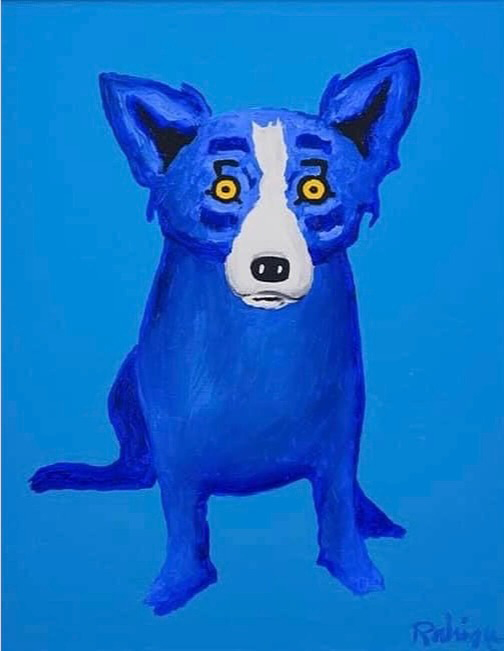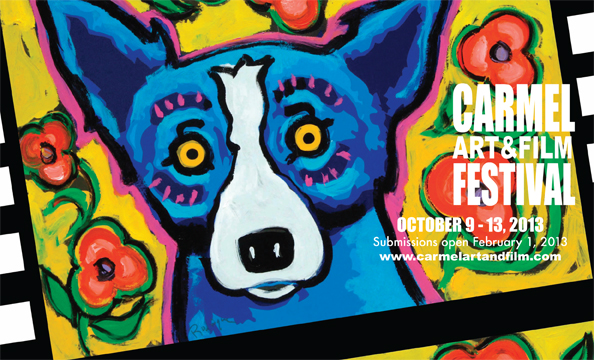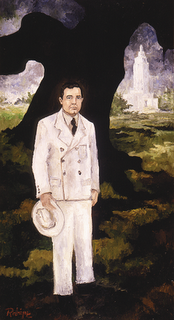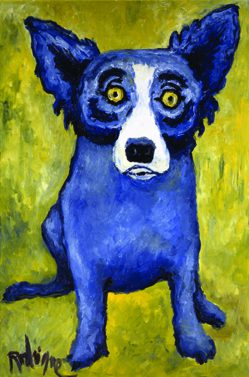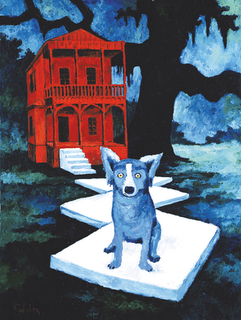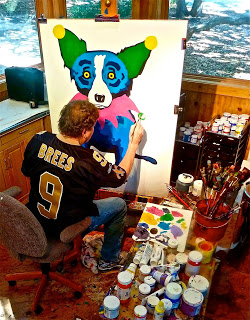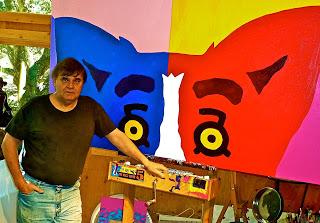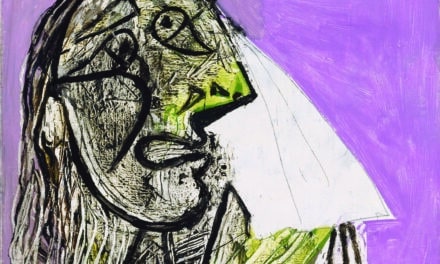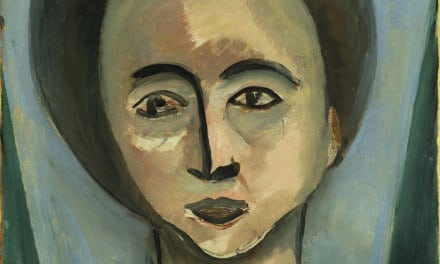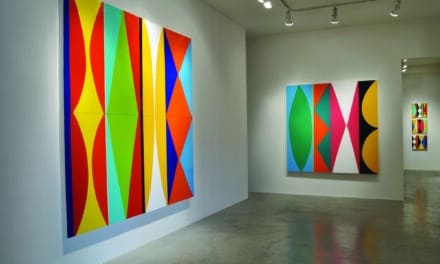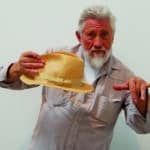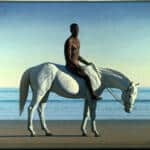Exploring the Legacy of George Rodrigue
Singin' the Blues Dog
Discover the captivating world of George Rodrigue, a visionary artist whose Blue Dog series catapulted him to international fame and became a symbol of American contemporary art.
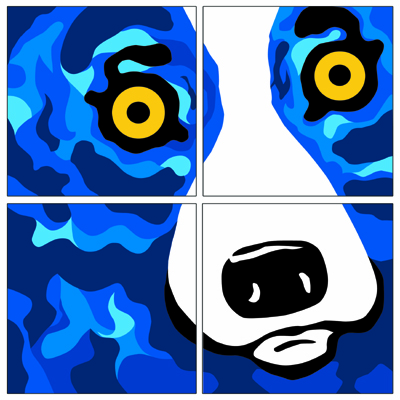
For a young child growing up in the Cajan culture of the Deep South, the legend of the loup-garou could not have been any more real. A monster of epic proportions, the loup-garou lived large in many a childhood imagination. All Cajun children knew of the fierce werewolf who lived in the darkest parts of the forest and was always ready to pounce on an unsuspecting victim. According to Cajun legend, anyone caught under the spell of the loup-garou would become a hideous and tortured animal himself. As a child, George Rodrigue learned of the loup-garou from his mother who would use it to scare him into behaving. It did make an impression. As an adult and an aspiring artist, Rodrigue returned to his Cajun roots for artistic inspiration, but it would be his childhood memory of the imaginary monster that would make him and his art the visual equivalent of a household name.
Sitting comfortably in his Carmel Valley studio, with a large Blue Dog work-in-progress behind him, Rodrigue tells the story of the loup-garou without the sinister tilt. After all, it’s been a few years since his mother threatened him with the nasty werewolf, and Rodrigue’s own version of the loup-garou, better known these days simply as the Blue Dog, has evolved into something far less menacing than the monster of his boyhood nightmares.
“For me, it’s a vehicle to comment on life today,” Rodrigue says, “People are captivated by the blue dog. It’s easy to empathize with. The dog looks a bit bewildered, as if trying to figure things out. People seem to relate to that.” They not only relate, but they are also willing to part with some cold, hard cash to have one. Since painting the first loup-garou in 1984, Rodrigue has created more than 1,200 Blue Dog paintings and they are expensive. Rodrigue’s prints sell for a couple of thousand dollars while originals can go for as much as $250,000. Of course, it didn’t start out that way.
George Rodrigue was born in New Iberia, Louisiana, in 1944. When he was in third grade he contracted polio and was in bed for a year and a half. To pass the time, his mother gave him crayons and clay, and from that point on he was hooked. Rodrigue knew he wanted to be an artist. When he was 18, he traveled west to study at the Art Center College of Design in Pasadena, California. He was heavily influenced by the pop artists popular at the time. People like Andy Warhol were changing the concept of art and design, and Rodrigue embraced these new ideas. The Pop Art revolution continues to influence his art even today. While it is easy to see that influence in his Blue Dog paintings, it is a bit more difficult to see it in his earlier work, but it is there.
After he was finished with school, Rodrigue returned to his native Louisiana only to find the bayou changed. “The culture was disappearing,” says Rodrigue, “I wanted to preserve as much of it as I could, so I started painting the people I knew.” His early work did chronicle the Cajun culture, both literally and symbolically. He started with the Louisiana live oak, eventually adding people in his paintings. The Cajun paintings have a folk art feel to them, and Rodrigue says that was no accident. He explains it this way; “I invented my own way of painting the Cajun people; white faces (representing) life and light reflecting from within. If my paintings had been photographs, all the people would be in shadows, but instead I painted them with white faces. Light reflecting from within. The bodies are stiff and rigid on [purpose. The people look as if they were cut out and pasted on the landscape, much like the Cajun people were uprooted and pasted on the Louisiana landscape. They are also stiff, as if caught in a culture that does not bend to change.”
For his subjects Rodrigue turned to old family photos and some of the Cajun myths, such as Jolie Blonde and Evangeline, which are both sad tales of lost love.
The Cajuns adopted Evengeline from a Longfellow poem. She became a symbol of the Cajun exodus from Canada to Louisiana. According to the poem and according to legend, she spent her life waiting for the love she left behind. Jolie Blonde (French for pretty blonde) is a similar tale. Rodrigue thinks it came from a song written by a prisoner; a song that laments the pain of the beautiful woman left behind. These two women/symbols struck a chord with Rodrigue. He painted them many times, but perhaps the most intriguing is his first Jolie Blonde. It is a spitting image of his wife, Wendy, both in appearance and spirit. Here’s the weird part: Rodrigue painted it in 1975 but did not meet his wife until 1992. Rodrigue acknowledges the similarities, but doesn’t elaborate, other than to say, “Yeah, it’s kind of creepy.”
Rodrigue’s early work has been described as dark and eerie without much color. Rodrigue bristles at the description. He say the color may be subtle but it’s complex. He challenges people to really look at the paintings. He says what first glance may look black, is actually many shades of many different colors. He says his paintings have always been about color and shape. “I have always been an abstract painter,” says Rodrigue, “I paint abstract shapes, like the oak tree, and then fill in around it. The same is true with my people. In my mind they are abstract shapes.”
This abstract/realism-based-on-Cajun-culture way to paint served Rodrigue well for 25 years. He made a good living, was recognized for his work and was even commissioned by President Reagan for a portrait. But it was a fateful day in 1984 when Rodrigue set out to paint that now well-known mythical monster from his childhood that would change his life forever. For inspiration he used Tiffany, his dog who had died four years earlier. He painted her in a graveyard under the moon (remember, he was trying to capture the legend of the loup-garou). She didn’t start out blue. She was actually gray, the way an animal might look in moonlight. The image haunted Rodrigue. He knew he had created something special, but he had no idea of what was coming. In 1989, he finally hung the first Blue Dog in his New Orleans gallery. People liked it, a lot. The Blue Dog phenomenon was born.
Over the next 15 years, the Blue Dog evolved from that first ghost-like image into something more obviously connected to Rodrigue’s Pop Art roots and less about the Cajun culture. The dog became bluer, the eyes changed from red to yellow, and the questioning, trademark stare became more prominent. Rodrigue painted the dog in every conceivable situation. The paintings became a sensation, making Rodrigue a successful artist, but it was the corporate connection that would vault him and his art into the financial stratosphere. Companies such as Absolut Vodka and Young & Rubicon (from the Xerox Corporation) offered him big bucks to help promote their products. Those very successful ad campaigns led to publishing contracts, which in turn led to five Rodrigue Blue Dog books since 1994.
Rodrigue makes no apologies for being rich and famous. He admits to being a relatively savvy businessman. He is also very protect. He says his lawyer are constantly scanning eBay to head off anyone who is looking to make a buck on his Blue Dog image. He says his decision to go corporate was a calculated one. “I have resisted the urge to over saturate. My paintings hang only in my galleries in New Orleans, Carmel and Japan,” he says. He shrugs off critics who charge his Blue Dog is “lowbrow” and “just a fad.” Rodrigue us certainly one of the most successful living American artists, but he is not always listed as one of the most “important” –a term critics and art historians use to separate great artists from simply good ones. Rodrigue claims not to care. He insists that his art speaks for itself and points out if it’s a fad, it certainly is a long lasting one.
The blue dog is almost always the same in every painting. Certainly the look of bewilderment is always there, although sometimes the color can change. The dog can be red when possessed by spirits, and in one poignant painting is white. Like most Americans, Rodrigue was stunned by the events of September 11, 2001. He retreated to his studio to find comfort and started painting. Originally, the dog was black and set on a background filled with the American flag. A striking image, but Rodrigue thought it was too dark, too much like death, so he started to fill in the black with white. He thought he would add color later but decided the stark white captured exactly the injured feeling he was looking for, but still gave the painting hope. He printed 1000 copies of the painting and sold the prints for $500 apiece. They sold out in a matter of weeks. Rodrigue then donated the $500,000 to the Red Cross for disaster relief in New York City.
A couple of years later, another disaster of a different sort provided the inspiration for a change in artisitic direction for Rodrigue; these days he is working on a series of paintings without a Blue Dog to be found. They were inspired by the power and fury of Hurricane Lili. Rodrigue and his wife, Wendy, watched the storm from their living room window of their home in Lafayette, Louisiana. They watched as a 150-year-old oak was uprooted from their front yard, only to crash to the ground just inches from their home. The Rodrigues left for Carmel (their home-away-from-home) the next day and Rodrigue started work on the Hurricane Series. They are large canvases filled with color and movement; sporting names like Agnes, Camille, Evangeline and so on through the alphabet. Rodrigue is enjoying this new direction but he is not about to give up his bread and butter. In fact, on the day that we visited his Carmel Valley studio he is working on a Blue Dog painting, but several of the Hurricanes hang on the wall.
If you ask Rodrigue about his favorites he says, “painting is a problem. Once I solve the problem, once I finish the painting, I’m ready to move on. So when people ask me which one is my favorite, It’s always the one I’m working on right now. Some paintings I see in my head even before I start. I know exactly what they will look like when I’m done. Others, like the hurricanes, I have no idea how they will end up.”
He likes the uncertainty about his work, but he also knows that his legacy will be forever linked to the Blue Dog. He has created a cultural icon, something that continues to intrigue even after more than a decade. Rodrigue sums it up this way; “Everything came together with the Blue Dog. It was fresh, clean, new and different, but was such a good representation of me as an artist: my training as a graphic and contemporary abstract painter, rich Cajun imagery, color and a good story all wrapped up into a package that people couldn’t wait to unwrap.” 15 years later, they are still unwrapping.
Explore the Blue Dog Collection
Delve into the vibrant world of George Rodrigue and discover the iconic Blue Dog series that has captivated art lovers globally. This gallery features a curated selection of his most celebrated works, each piece echoing the unique fusion of Cajun culture and contemporary art.



